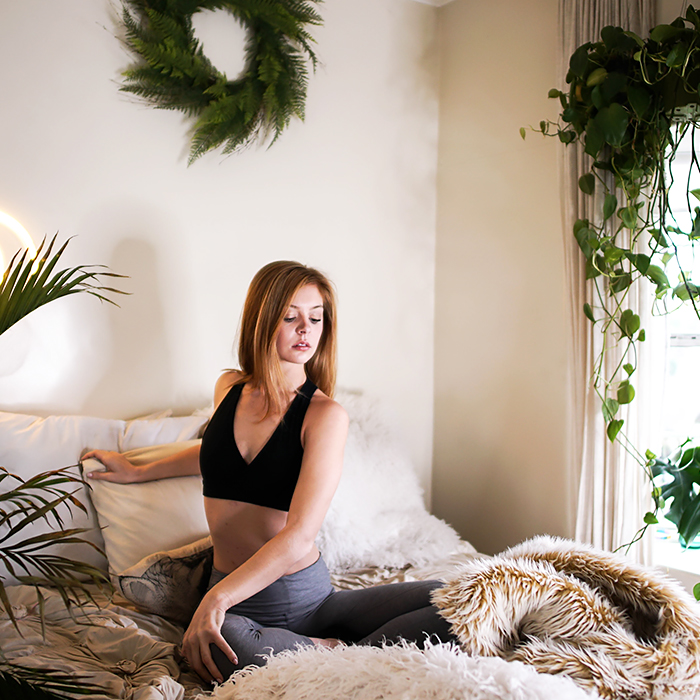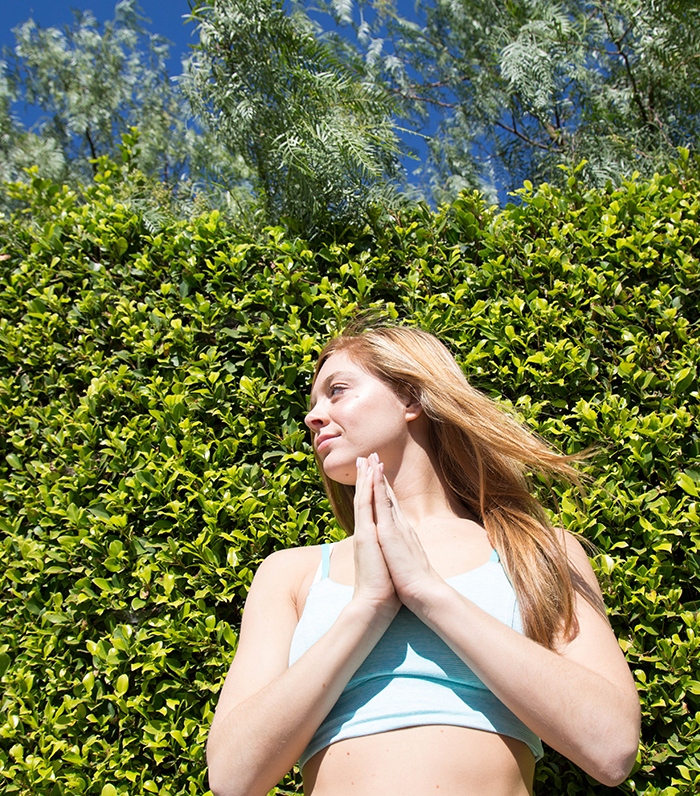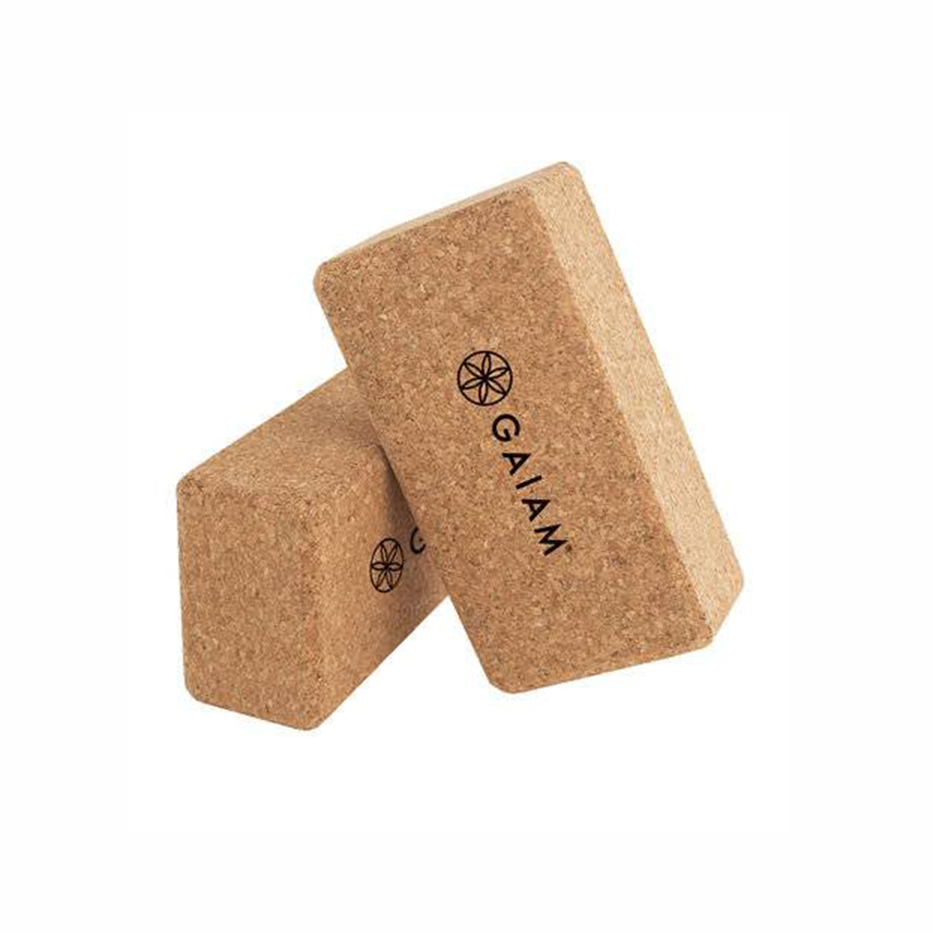The Skeptic's Guide to Getting Into Yoga

Alexis Novak is a yoga instructor, NASM-CPT, and mobility enthusiast. As a contributor for THE/THIRTY, Alexis will be sharing her knowledge of anatomy, biomechanics, and meditation to help you find your own personal balance between strength and serenity. Her approach to wellness is to simplify and keep a sense of humor. This month, she's sharing her perspective on creating your own yoga practice.
As a yoga instructor, I hear the same phrase a lot when yoga comes up in conversation: "I am just so bad at yoga. I can't even touch my toes." To which I respond with one of my favorite quotes about yoga: "Not going yoga because you aren't flexible is like not taking a bath because you are too dirty." I am not here to convince you that yoga is the "quick fix" answer to our problems, but I am going to share how yoga can be a healing safety net if you let it.
But where to begin? There are so many studios, styles, teachers, etc. How do you know which one is the "right" one for you? When asked, I tell people to try them all. There are so many options, and you won't know which one works best for you unless you try them or at least look into what they are about. There isn't one "right" yoga style, or right way to ingest your yoga intake (at home or in studio). Below are a few tips to starting, maintaining, and enjoying your own personal yoga practice—no matter what obstacles you think might be standing in your way.

Roadblock #1: Convenience
The fix: Pick somewhere close to home (even if it's, ahem, home).
We lead busy lives, and the last thing we need is to stress out about making time to relax. That's why finding a space in your home or a studio close to your work is important. I have found that picking a spot in your house to keep your mat always laid out or just a spot that is your designated "meditation area" helps build a routine and tell the body and mind "when I am in this space, it is time to practice mindfulness and yoga."
If you like being guided in a studio, it's great to find one on your way to or from work or another location you frequent. After a long day of work, it's more of a hassle to try and drag yourself to a yoga class that is far away from home, so finding one that is convenient helps eliminate additional stress and get you safely to your yoga mat.
Roadblock #2: Cost
The fix: Seek out donation-based classes—or head online.
Affordability is a big factor. But make no mistake: There are cost-effective ways to maintain a regular practice on a budget. Almost every yoga studio has an offering of free or donation classes if you look into it. There are also usually Lululemon or other athletic stores that offer community classes weekly. It may take a little bit of online searching, but they are out there if you look.
And if the times do not work, and you have found a yoga studio that you really love, studios usually have a karma work-exchange program where you are able to work at the studio for a few hours a week or month in exchange for classes. Another option if you are not able to make it to a studio is to try some yoga at home. There are endless styles and classes available for free on YouTube. (I like Yoga with Adriene and of course, my own channel, Alexis Novak Yoga.)
Roadblock #3: Injury (or poor flexibility)
The fix: Yoga props are your friends.
Using at-home props such as yoga blocks, yoga straps, chairs, pillows, or bolsters can dramatically alter your yoga practice to make it more enjoyable and accessible to start. I always tell my students in the beginning, props are not crutches—they are training wheels. You must first build the pose around your body, not the other way around. Yoga shouldn't be painful, so if you can't touch the ground that okay! Bring the ground to you by propping a block underneath your hand or using a chair for support. I have been teaching and practicing yoga for almost a decade, and I still use props as much as possible since it enhances my yoga practice and keeps my body safe.
Roadblock #4: Attitude
The fix: Take the time to mentally prepare—and don't stress if you can't.
This one may be the most important. Even if you have covered all the above basics, if you are not in the right headspace, it's tough to get started. What I have found helpful when I am feeling particularly unmotivated to meditate or practice yoga is to at least sit myself on my mat and set a timer for 20 to 30 minutes. Even if I am just sitting on my mat, distracted as ever but attempting to focus on my breathing or my bodily sensations until the timer goes off, that's what a practice can look like for that day. It's important to remember that whatever comes up for us, even if it's that we don’t want to do it, we should use that as a golden opportunity to work with those feelings. A yoga practice isn't "perfect" every day—just like life, it ebbs and flows. Take it slow.
So, yogi, I think you're ready to begin. Connect with your breath, have fun, and be good to yourself. It's never too late to begin again.
Next up, learn how to establish a yoga practice at home.
Disclaimer
This article is provided for informational purposes only and is not intended to be used in the place of advice of your physician or other medical professionals. You should always consult with your doctor or healthcare provider first with any health-related questions.


